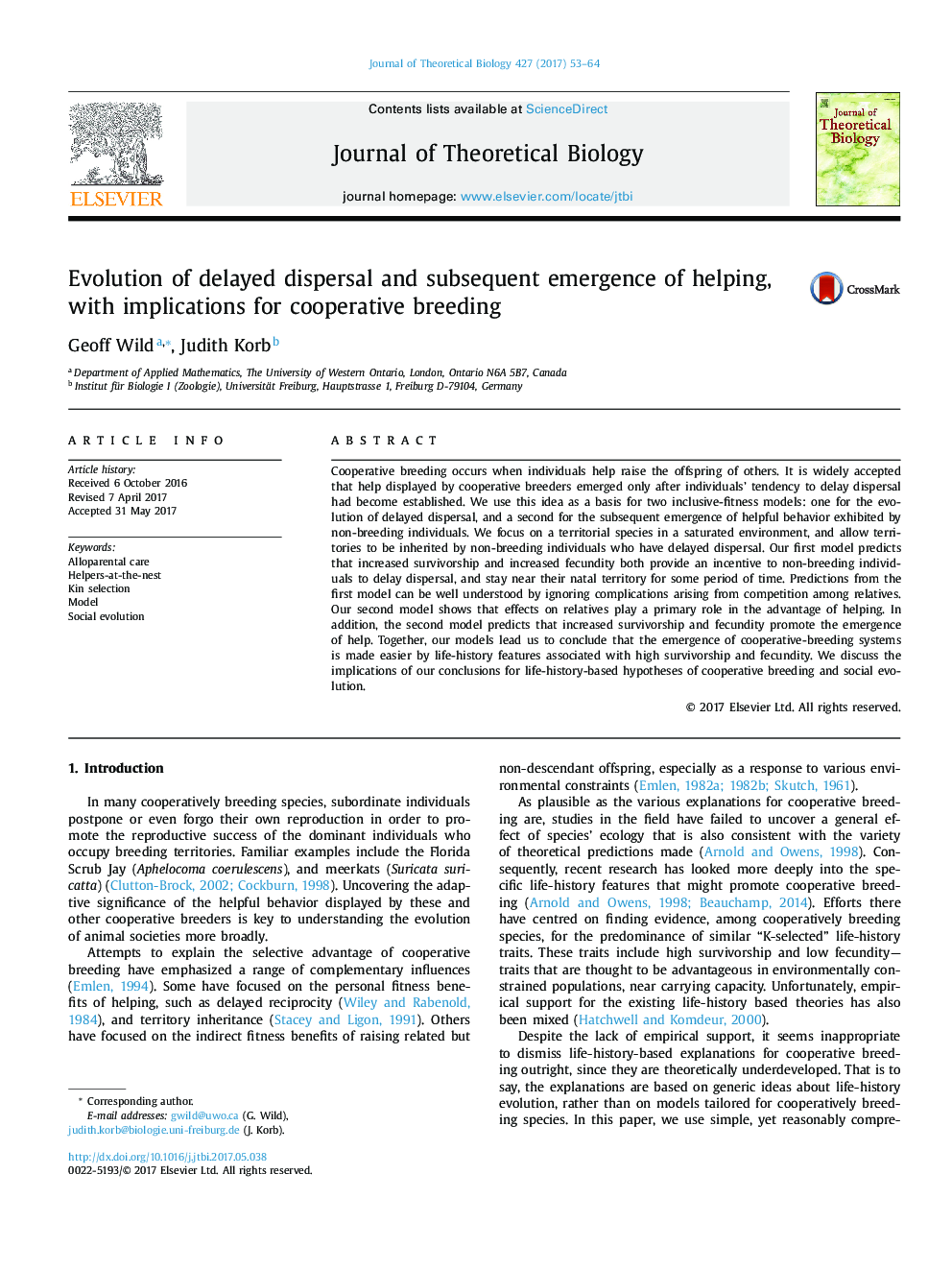| Article ID | Journal | Published Year | Pages | File Type |
|---|---|---|---|---|
| 5760078 | Journal of Theoretical Biology | 2017 | 12 Pages |
Abstract
Cooperative breeding occurs when individuals help raise the offspring of others. It is widely accepted that help displayed by cooperative breeders emerged only after individuals' tendency to delay dispersal had become established. We use this idea as a basis for two inclusive-fitness models: one for the evolution of delayed dispersal, and a second for the subsequent emergence of helpful behavior exhibited by non-breeding individuals. We focus on a territorial species in a saturated environment, and allow territories to be inherited by non-breeding individuals who have delayed dispersal. Our first model predicts that increased survivorship and increased fecundity both provide an incentive to non-breeding individuals to delay dispersal, and stay near their natal territory for some period of time. Predictions from the first model can be well understood by ignoring complications arising from competition among relatives. Our second model shows that effects on relatives play a primary role in the advantage of helping. In addition, the second model predicts that increased survivorship and fecundity promote the emergence of help. Together, our models lead us to conclude that the emergence of cooperative-breeding systems is made easier by life-history features associated with high survivorship and fecundity. We discuss the implications of our conclusions for life-history-based hypotheses of cooperative breeding and social evolution.
Related Topics
Life Sciences
Agricultural and Biological Sciences
Agricultural and Biological Sciences (General)
Authors
Geoff Wild, Judith Korb,
